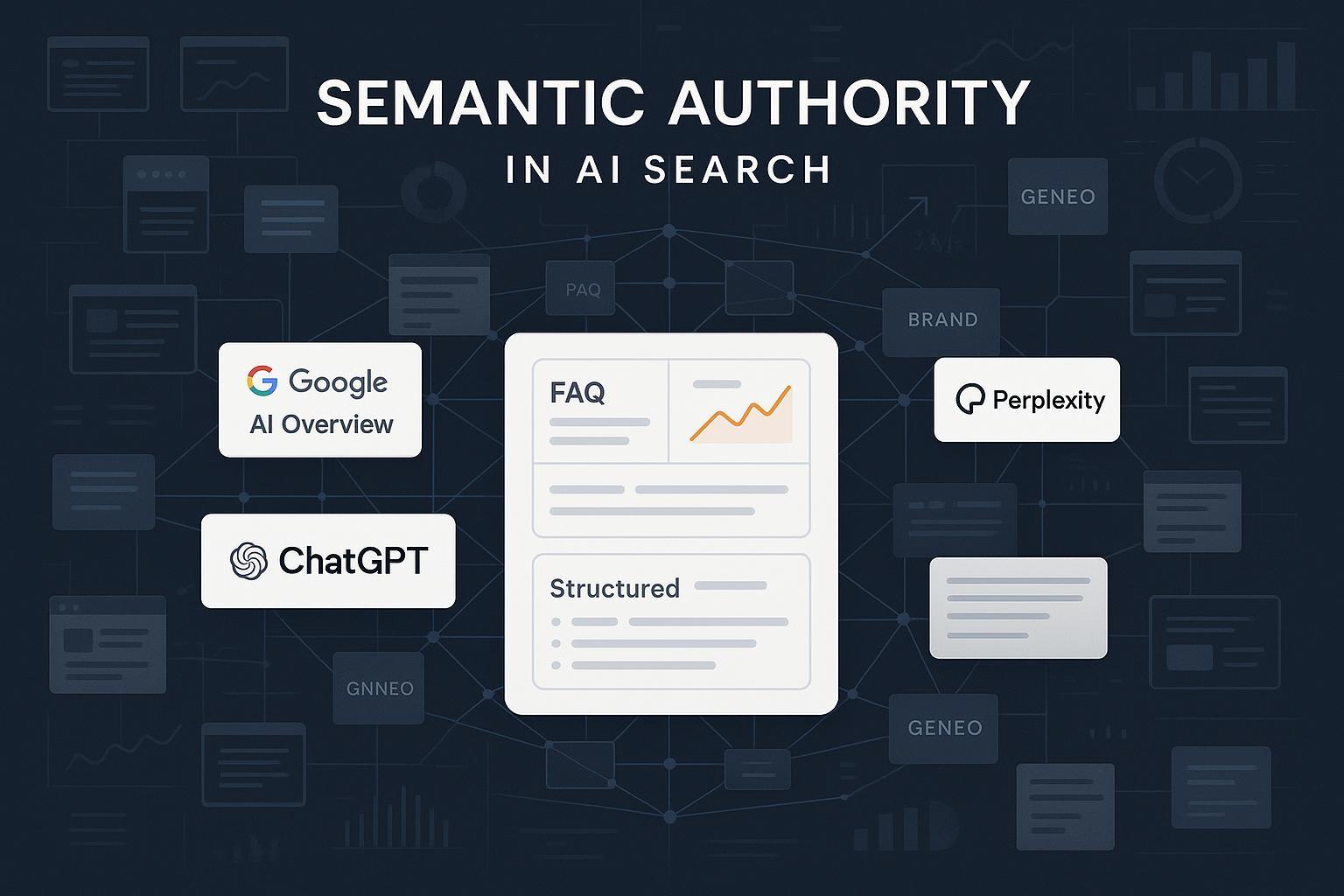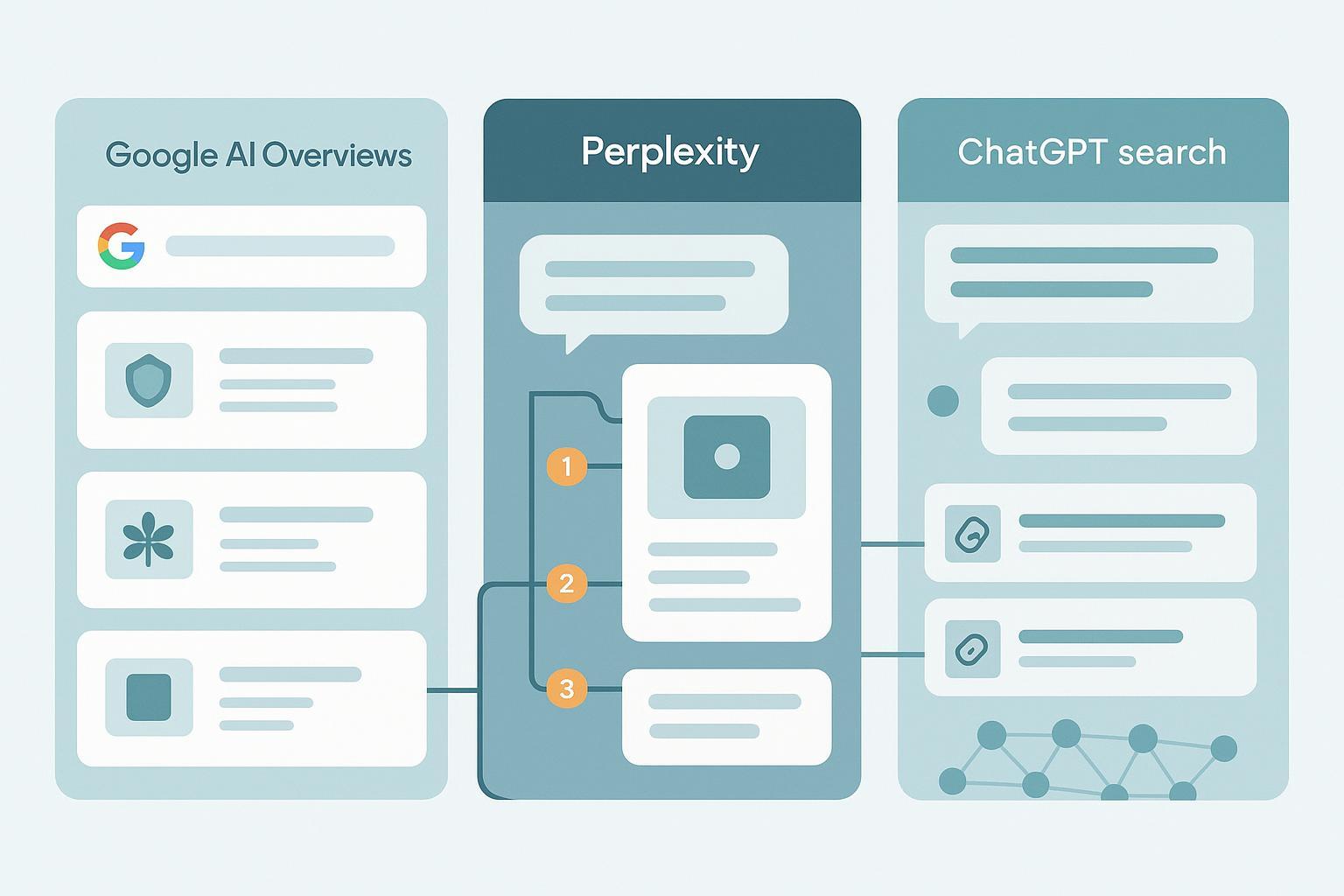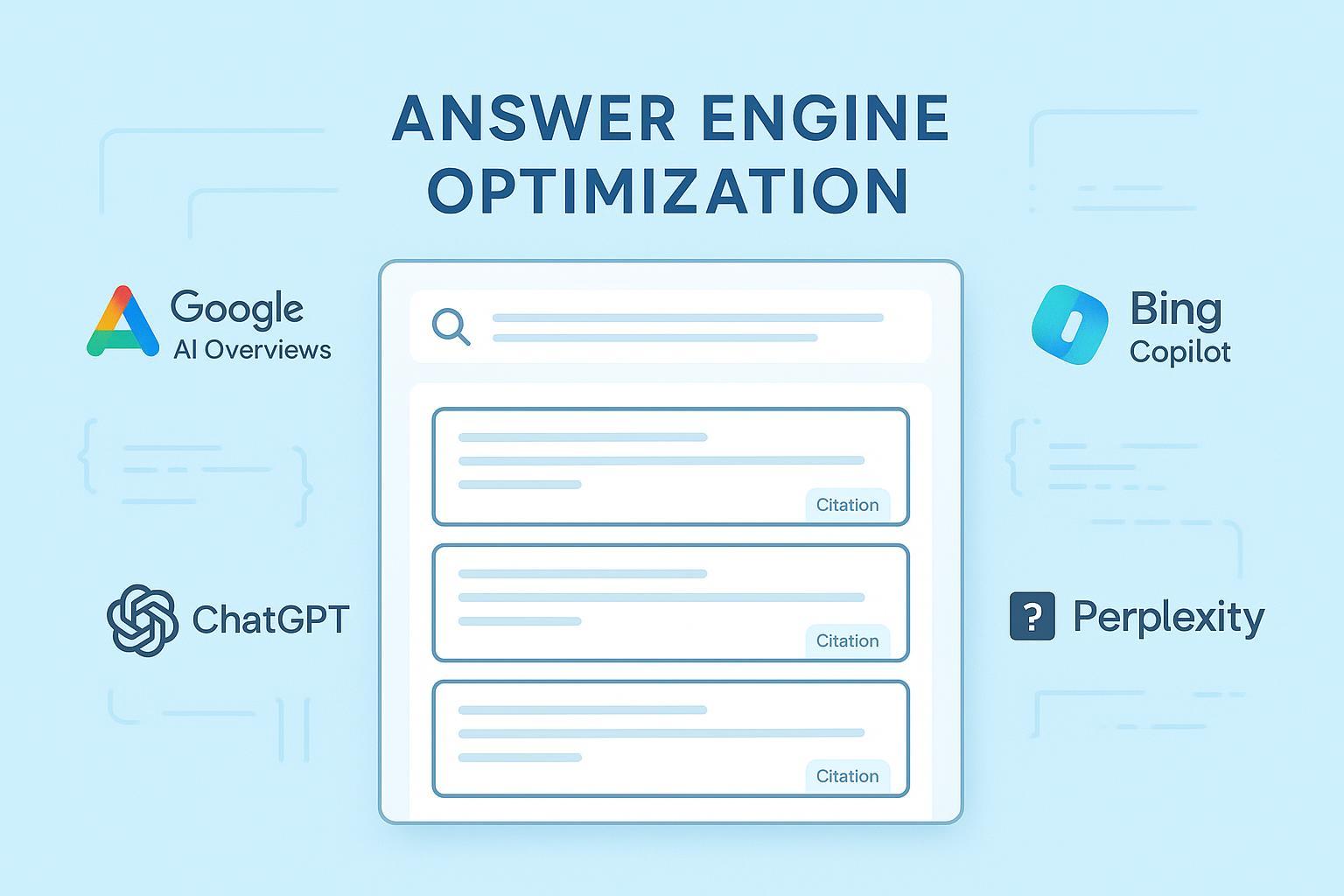Semantic Authority Best Practices: Structured Content to Win AI Search (2024)
Master semantic authority in AI search with advanced structured content strategies, benchmarks, enterprise workflows, and actionable tools like Geneo. Elevate your brand's AI visibility.


Introduction: Why Semantic Authority Matters in the AI Search Era
AI-powered search platforms—Google AI Overview, ChatGPT, Perplexity, Bing Copilot—are transforming how brands are discovered and cited. Winning visibility in these engines depends not on classic SEO signals, but on advanced semantic authority: your brand’s trustworthiness as interpreted by AI through structured content, entity relationships, and well-orchestrated schema. Recent industry benchmarks show that semantic structuring drives citation rates up to 127% (SEOmator analysis), with enterprise ROI directly tied to AI-optimized content formats.
The Power of Structured Content for AI Visibility
Structured content—schema markup, semantic chunking, entity mapping—acts as the foundation for AI discoverability and authority. According to BrightEdge and Search Engine Journal, it feeds knowledge graphs and answer engines, helping your brand surface in AI-driven summaries and citations.
Key data:
- FAQs, HowTo, and comparative list formats increase citation probability by 32.5%.
- Bullet points boost AI citation likelihood by ~8.6%, step lists by ~5.4%. (SurferSEO case study)
- Structured data is more influential for AI search than backlinks or raw traffic metrics.
Best Practices for Semantic Authority & Structure in AI Search (2024)
1. Implement Comprehensive Schema Markup
Add deep schema (Organization, Person, FAQ, HowTo, Product) to every essential page. This enables AI engines to efficiently extract and interpret brand and product attributes for knowledge graphs and summary panels.
- Action Steps:
- Use Schema.org standards for all web entities.
- Deploy FAQ, HowTo, and product schemas on top-performing/target AI citation pages.
- Audit with Google Rich Results, test AI citation via Geneo or BrightEdge.
- Automate schema updates via CMS/workflow for scale.
2. Chunk Content for AI Extractability
Structure every resource into 100–300 word chunks, each with explicit headings, lists, and answer blocks. LLMs preferentially extract single-idea segments, improving your inclusion rate.
- Action Steps:
- Break long-form content into discrete, self-contained paragraphs—one question or idea per chunk.
- Lead with direct answers and relevant citations.
- Insert bulleted lists, tables, or process flows prominently.
- Monitor chunk inclusion in AI Overviews using Geneo’s dashboard.
3. Map & Cluster Semantic Entities
Build out entity maps: connect topics, products, people, and core concepts into semantic clusters with both on-page and off-page references. AI platforms leverage these mappings to establish authority and distinguish expert sources.
- Action Steps:
- Identify key entities (brand, products, categories, expert staff).
- Link them via explicit schema and contextual internal cross-linking.
- Use Contently or Geneo entity dashboards for cluster visualization and governance.
- Audit relationships and update on evolving campaigns or launches.
4. Format Answers for Direct AI Citation
Deploy answer-oriented blocks such as FAQs, HowTo steps, comparative features, and expert statements. Use clear headings and concise summaries. These are preferred by AI engines for featured snippets and generative results.
- Action Steps:
- Build structured FAQ hubs and HowTo guides for top intent keywords.
- Place step-wise lists and direct answers per question.
- Track which answer formats organically surface in Google AI, ChatGPT, or Perplexity results using Geneo or Semrush AIO.
5. Govern, Audit, and Iterate Structured Content Enterprise-Wide
For large brands, maintain scalable workflows for ongoing structured content governance, technical audits, and visibility optimization across platforms. This ensures consistent authority and rapid response to AI ranking algorithm changes.
- Action Steps:
- Schedule monthly semantic audits using Geneo, BrightEdge, or internal data teams.
- Create checklists for schema coverage, answer format compliance, and entity interlinking.
- Instantly adjust content based on citation/visibility feedback from AI dashboards.
- Automate reporting and benchmarking for key KPIs: AI citation rate, branded entity share, sentiment scores.
6. Track, Measure, and Optimize with AI-Native Tools
Deploy enterprise-grade dashboards to monitor real-time cross-platform brand visibility, sentiment, and semantic authority. Geneo stands out by covering Google AI Overview, ChatGPT, Perplexity, Bing Copilot, and more, all in one interface.
- Action Steps:
- Use Geneo to track live and historical brand mentions, citation share, and sentiment across platforms.
- Benchmark schema and structured content optimizations with before/after AI inclusion rates and ROI data.
- Visualize authority clusters, map citation flows, and automate alerting for major visibility changes.
- Leverage Geneo’s AI-powered recommendations to proactively optimize semantic structure and platform coverage.
Enterprise Workflow Map: Structured Semantic Authority Ops (Using Geneo)
- Discovery: Identify high-opportunity pages/themes for semantic markup.
- Deployment: Apply schema, chunk content, build FAQs and entities per blueprint.
- Monitoring: Track live AI citation, sentiment, and ranking in Geneo's dashboard.
- Audit & Optimization: Iterate based on weekly/monthly AI platform feedback and dashboard KPIs.
- Reporting: Visualize advancement—authority clusters, citation trends, ROI of optimizations.
- Scaling: Automate schema deployment and auditing for expanding content portfolios.
Case Studies & Data Benchmarks
- Surfer SEO boosted competitive query inclusion within 8 hours by focusing on semantically structured, answer-formatted content—a 8.63% citation lift (SurferSEO Data).
- SEOmator's analysis found comparative listicles generate 32.5% of AI/LLM citations, far outperforming traditional SEO measures (SEOmator Benchmark).
- Geneo client (anonymized Fortune 500): After deploying enterprise-wide schema and auditing workflows via Geneo, brand citation rates in Google AI Overview rose by 54%, and generative AI summary sentiment shifted positively.
- BrightEdge clients report rapid authority growth by operationalizing AI search monitoring alongside classic SEO (BrightEdge Blog).
Actionable Checklist: Semantic Authority Building in AI Search
| Step | Key Task | Tool Recommendation |
|---|---|---|
| Schema Markup | Apply deep schema to all major entities/pages | Geneo, BrightEdge, CMS Schema |
| Chunking | Break content into question/answer blocks | Geneo, SurferSEO |
| Entity Clustering | Build map of semantic connections | Geneo, Contently |
| Answer Formatting | FAQs, HowTo, lists for direct citation | Geneo, Semrush AIO |
| Governance | Schedule automated audits & KPI tracking | Geneo, BrightEdge |
| Monitoring | Use real-time, cross-platform dashboard | Geneo |
Advanced Resources & Guides
- Geneo – AI Visibility & Authority Dashboard
- Semrush AIO – LLM Citation Tool Review
- Contently – Entity Mapping Best Practices
- BrightEdge – Structured Data & AI Search Era
- Search Engine Land – Chunk, Cite, Clarify
Conclusion & Next Steps: Command AI Search with Structured Semantic Authority
AI-driven search platforms reward brands who architect their content for semantic clarity, machine-readability, and direct answer extraction. By implementing the best practices above and adopting advanced monitoring solutions like Geneo, your enterprise can dominate visibility, citations, and brand sentiment in the new AI Search landscape.
Ready to see your brand dominate AI search platforms? Try Geneo free for scalable, data-driven semantic authority optimization—or book a personalized walkthrough for enterprise solutions.





